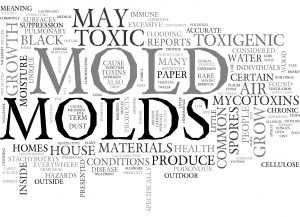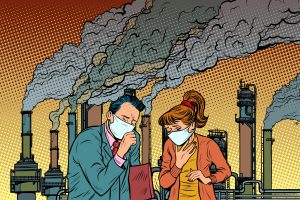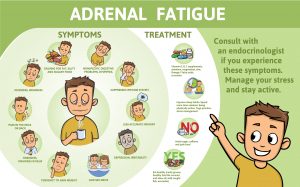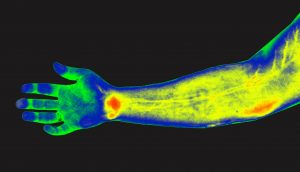
Several years ago, Jessica and our whole family was exposed to toxic levels of mold. We’ve done so much and come so far in addressing the many health issues that Jessica started exhibiting when she was eight months old. We were exposed to a few different types of mold but the two that were highest were stachybotrys and aspergillus.
While Jessica has been doing soooo much better, I noticed that if I was not super consistent with probiotics like every day probiotics Jess would get little colds that lasted less time than in the past but still negatively affected her life and mine in that she had to stay home longer from school because of all the new COVID-19 rules. I looked in Jess’s health journal and found I had a short season of going 5, 6, and up to 11 days with no probiotics. I would give them to her for a few days in between each time of not giving them to her.
Giving Jess her probiotics is a bit of an ordeal since I have to make sure she has not had too much to eat, its not too late at night, not in the morning before school, because it can take up to an hour to give them to her, although since going back up to taking them every day, it’s been getting a bit easier.
Besides the fact that she got three colds in five-month period of time her most recent lab tests showed she had high levels of proteus mirabilis at a 3+, the level only goes up to 4+, which is bacteria that is not good at that level. Everything else had finally somewhat normalized and then this dysbiosis showed up again. It kinda made no sense but could explain the fact that she could get a cold overnight after playing at the park.
Because of the continued colds albeit much less severe colds than in the past, it led us a new doctor who I consulted about previous OAT tests through Great Plains Labs to run the Mycotoxin test. He said Jess must have something that is continuously draining her immune system. It’s looking like this toxin could be part of the problem.
Mycotoxins are the byproducts of mold or fungus. Mold is the large category with fungus and yeast being the subcategories of mold. I have written about yeast especially candida albicans when I was looking into that issue being a root cause of IBD.
In wanting to keep this really simple I just want to say what mycotoxins can do in the body. A guest blooger Dr. Rob Abbott writing on www.autoimmunewellness.com said, “Mycotoxins have been associated with damage to the nervous system, kidneys, immune system, liver and the genetic “instructions” – DNA itself. Almost all medical students learn in medical school that a mycotoxin known as aflatoxin produced by the mold Aspergillus can be a causatory element in the development of liver cancer. All forms of medicine agree you see, that mycotoxins can exert detrimental effects on humans, the challenges arise when we realize that it is not as simple as mycotoxin = “always bad in any amount at any time”. https://autoimmunewellness.com/mold-and-mycotoxin-illness-should-i-be-concerned/
Everyone is different in their reactions to mold, fungus, or yeast. While four family members were exposed to the high levels of toxic mold in our house only two of us had more severe reactions. I (Jess’s mom) had eosinophilic esophagitis (an autoimmune disease of the esophagus) triggered. I had been diagnosed with that ten years earlier in 2009 and never had ANY overt symptoms until one and half years after being exposed to the mold. I had white spots in my throat, extreme throat pain, and eventual inability to eat anything but chicken, summer squash, and onions in a blended liquid which I did for about two weeks. It resolved pretty well but after taking 6 CBD oil pills (which I tried in the past for other health issues with no success), overnight the throat pain was gone.
Listen to what Dr. Abbott says about the difference with people’s reactions, “Not all humans are similarly affected by even the same level of mycotoxin exposure, let alone the same mycotoxin itself. Numerous variables can contribute to someone’s susceptibility to environmental toxicity such as mold exposure including nutritional status, the health of the gut microbiome, liver detoxification – cytochrome P450 pathways, the function of the biliary tract, bowel movements, and overall immune balance.” https://autoimmunewellness.com/mold-and-mycotoxin-illness-should-i-be-concerned/
Mycotoxins can very negatively affect the gut microbiome which is very important to overall health. The research article entitled Mycotoxin: Its Impact on Gut Health and Microbiota says, “mycotoxins cause perturbation in the gut, particularly in the intestinal epithelial. Recent insights have generated an entirely new perspective where there is a bi-directional relationship exists between mycotoxins and gut microbiota, thus suggesting that our gut microbiota might be involved in the development of mycotoxicosis…It is now well established that a healthy gut microbiota is largely responsible for the overall health of the host. Findings revealed that the gut microbiota is capable of eliminating mycotoxin from the host naturally, provided that the host is healthy with a balance gut microbiota. Moreover, mycotoxins have been demonstrated for modulation of gut microbiota composition, and such alteration in gut microbiota can be observed up to species level in some of the studies. Most, if not all, of the reported effects of mycotoxins, are negative in terms of intestinal health, where beneficial bacteria are eliminated accompanied by an increase of the gut pathogen.” https://pubmed.ncbi.nlm.nih.gov/29535978/
All the toxins that fungus make are not mycotoxins but the mycotoxins can be toxic to more than one organ system but they especially can do damage to the liver, kidneys, immune system, and neurology listen to the research study abstract from the study entitled Genotoxic effects of mycotoxins , “Although all mycotoxins are of fungal origin, all toxic compounds produced by fungi are not called mycotoxins. The interest in mycotoxins first started in the 1960s, and today the interest in mycotoxin-induced diseases has increased. To date, 400 mycotoxins have been identified and the most important species producing mycotoxins belongs to Aspergillus, Penicillium, Alternaria and Fusarium genera. Mycotoxins are classified as hepatotoxins, nephrotoxins, neurotoxins, immunotoxins etc.” https://pubmed.ncbi.nlm.nih.gov/32653416/
While we were exposed because of toxic mold in our mattress which was released into the air that we breathed, fugus can overgrow because of other immune issues, Medical microbiology says, “Fungal diseases are an increasing problem due to the use of antibacterial and immunosuppressive agents. Individuals with an altered bacterial flora or compromised defense mechanisms (e.g., AIDS patients) are more likely than healthy people to develop opportunistic fungal infections such as candidiasis.” https://www.ncbi.nlm.nih.gov/books/NBK8471/.
This makes me greatly concerned for Jessica because simply things like antibiotics can contribute to big issues like mold/fugus.
The online book entitled Medical Microbiology seems to be very informative about mold/fugus/yeast. One statement I found informative is, “…systemic fungal infections can occur in immunocompromised hosts from normal flora. For example, Candida albicans is frequently seen as part of normal vaginal flora but can produce systemic disease in cancer patients receiving chemotherapy or in AIDS patients. In addition, fungi can indirectly produce disease by eliciting an immune response in the host.” https://www.ncbi.nlm.nih.gov/books/NBK8165/
Other issues that Dr. Abbott says mycotoxins can do is “cause irritation and symptoms affecting the eyes, ears, nose, and throat such as hay fever, allergies and chronic sinusitis. Others will provide challenges to the respiratory system that may manifest as sensitivity to fragrances or other volatile compounds, wheezing or a chronic dry cough.”
Dr. Robb Abbott a practicing functional medicine doctor located in Charlottesville, VA talks about what to do and how to detox from mold much of which we did when we first moved out of our house to do a complete mold remediation of our home which took almost two months.
 https://www.mdpi.com/1660-4601/13/3/264/htm
https://www.mdpi.com/1660-4601/13/3/264/htm 
